Missing some of your old comfort foods? Re-create (and improve!) your favorite carb-laden baked goods by using low-carb flour instead. Here are the best keto flours, how to use them and some easy recipes to try them out with!
Here at Thinlicious, there are many things we love about following a low-carb lifestyle, but one of the very best things about our plan is that you don’t have to give up your favorite foods to lose weight and get healthy. You just have to find new ways to cook them.
In fact, that’s probably the thing our customers rave about most—just how delicious our recipes are. It’s hard to believe you can eat so well and still reach all your weight loss goals.
And while our recipes really are amazing, chances are, especially if you’ve been following a low-carb or ketogenic diet for a while, there will come a time when you want to try modifying some of your own favorite recipes to convert them to low carb.
Are you ready to lose weight and heal your body for life (without dieting, drugs, or making yourself miserable)?

Our free on-demand video training will walk you through how to make this THE year you set health goals…and keep them.
That’s where things can get a little tricky, especially when it comes to flour and baking.
And we hate to break it to you, but at this point, there’s not yet a perfect 1:1 substitute for all-purpose flour that you can swap out any time you want.
The reality is that each type of low-carb flour reacts differently to the cooking or baking process, so you may need to be okay with some trial and error when modifying your favorite recipes.
So which type of these keto flours is the best one to use? And what ratio should you be using? Can you just swap a nut-based flour for all-purpose flour? What do you do if you’re allergic to tree nuts? Can you use all low-carb flours in place of each other?
Those are just some of the most popular questions. There are a lot more that people ask (you might even be thinking of a few right now).
To sift through all of the questions (ha! pun intended!), let’s look at the best low-carb flours you can buy, how to use them and some of our favorite recipes that you can make with them.
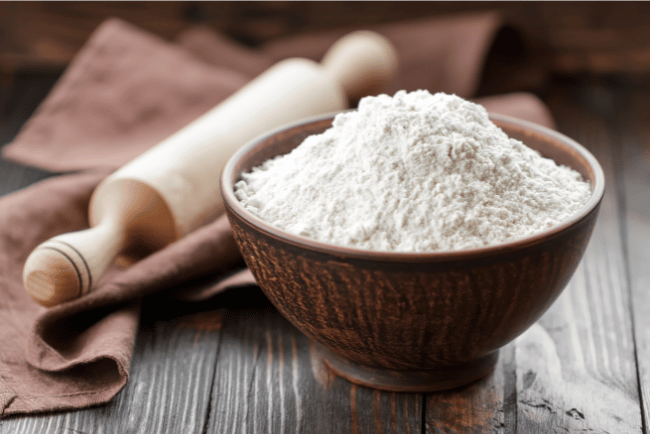
The 7 Best Keto Flours
When it comes to keto baking or low-carb cooking, most people think of the two most popular types of low-carb flour—almond and coconut flour. It makes sense; they are in so many recipes! But did you know there are other options out there too?
In fact, there are several low-carb, keto-friendly ingredients that you can use in place of all-purpose or wheat flour. Here’s a bit more about them and how to use them when you cook or bake.
One super quick note before we get into it. Remember, here at Thinlicious, we always subtract fiber from whole foods, like vegetables, almonds or ground almond flour. The carbs that remain after subtracting the fiber are called the net carbs.
We track total carbs (and don’t subtract the fiber) from processed snack bars, keto cereal mixes, keto candy—basically anything that is processed and that could contain what we call “sneaky fiber” and isn’t nutritious.
Under each type of flour below, you’ll see the total carbs in each 100 gram serving, as well as the fiber and net carbs.
1) Almond Flour
- Total Carbs: 21 grams
- Fiber: 10.7 grams
- Net Carbs: 10.3 grams
Almond flour is one of the most popular keto flours, and comes in two varieties—almond meal and blanched almond flour.
Almond meal is made from almonds that have been ground with the skins on, while blanched almond flour is made by grinding raw almonds that have had their skins removed.
The main difference between the two types of almond flour is the texture—almond meal comes out coarser, while blanched almond flour is finer and more powdery. Almond meal also has a slightly nuttier flavor than blanched almond flour, as it retains some of the bitterness from the skins.
When baking, choose blanched almond flour for a finer texture, or try using almond meal for added crunch!
2) Coconut Flour
- Total Carbs: 68.7 grams
- Fiber: 38.5 grams
- Net Carbs: 30.2 grams
This one is a bit higher in net carbs, so we don’t often use it as a main ingredient in Thinlicious recipes.
Coconut flour is a unique type of flour made from ground, dried coconut meat. It’s high in dietary fiber and gluten free, making it a great alternative to traditional wheat-based flours.
The best way to use coconut flour is in recipes that have been specifically designed for it. Because it absorbs more liquid than other flours, you’ll need to adjust the amount of liquid used in the recipe accordingly.
Additionally, because of its sweet taste, you may want to reduce the amount of sugar or sweetener used if substituting with coconut flour. For best results, start by using a ratio of 1 part coconut flour to 1 part liquid and experiment from there!
3) Flaxseed Meal
- Total Carbs: 30 grams
- Fiber: 28 grams
- Net Carbs: 2 grams
Flaxseed meal is a nutritional powerhouse that’s made from ground flaxseeds. It’s a great source of omega-3 fatty acids, dietary fiber and protein, and has a nutty flavor when used in cooking.
The best way to use flaxseed meal is as an egg substitute in baking recipes. Simply mix 1 tablespoon of flaxseed meal with 3 tablespoons of water. Let it sit for about 5 minutes until it gels, then add it to your recipe in place of one egg.
You can also use flaxseed to thicken smoothies or sprinkle onto yogurt for an extra nutritional boost.
4) Chia Flour
- Total Carbs: 37.5 grams
- Fiber: 33.7 grams
- Net Carbs: 3.8 grams
Chia flour is made from ground chia seeds, making it a great gluten-free substitute for wheat flour. It has a nutty flavor and a slightly gummy, gel-like texture.
When using chia flour in cooking, it’s best to use it in combination with other flours like almond or coconut.
Try starting by using ¼ cup of chia flour + ¾ cup of other flour for every cup of wheat flour in your recipe.
5) Psyllium Husk Powder
- Total Carbs: 89 grams
- Fiber: 78 grams
- Net Carbs: 11 grams
Psyllium husk powder is a type of dietary fiber made from psyllium seeds, and it’s often used as a binding agent. It has the ability to absorb liquid from recipes, giving them a thicker consistency without changing the taste.
When using psyllium husk powder for baking, it’s best to mix it with other flours like coconut or almond flour. Start using one tablespoon of psyllium husk powder for every cup of other flours in your recipe.
If you need more binding power, add an extra teaspoon or two until desired texture is achieved.
Fair warning: many people use psyllium husk powder as a gentle laxative due to the high fiber content so don’t be too heavy handed!
6) Pork Rind Dust
No matter the serving size, there are 0 grams of carbs in pork rinds.
Pork rinds are a great substitute for breadcrumbs in keto recipes since they are low in carbs and high in fat. Just be sure to finely crush them before using them to get a similar texture to breadcrumbs.
Many people love eating pork rinds because of the flavor and crunch! Pork rinds offer just enough saltiness to make them great for adding extra flavor to all sorts of savory dishes.
In particular, we find the satisfying crunch makes them the perfect thing to add as a crunchy coating to air-fried chicken tenders.
7) Cauliflower Flour
- Total Carbs: 70 grams
- Fiber: 10 grams
- Net Carbs: 60 grams
Just like it sounds, cauliflower flour is made by drying out cauliflower and then chopping it up into a fine powder.
You can use it 1:1 in any recipe that calls for all-purpose flour; just be prepared for a different taste. Real Simple magazine tested it in vanilla cake and discovered it tastes like, well, cauliflower. It’s best to use it in recipes with stronger flavors, like chocolate.
It’s also a good idea to always read the ingredients label before you buy a bag. Some brands of cauliflower flour sneak in rice flour, so make sure it’s only made with cauliflower.
The most popular way to use cauliflower flour is to make a low-carb pizza crust. If you have a food processor and dehydrator, you can make it at home. Or just buy a bag of pre-made cauliflower flour.
Keto Flour Substitution Rules
Now that you know a bit more about what each kind of keto flour is and how to use it, let’s dig into how to substitute one kind for another.
While you’ll get best results using the type of flour the recipe was specifically developed with, these swaps can help you in a pinch. You may need to make several versions of your recipe and have some trial and error, but the result is worth it!
How To Swap Coconut Flour For Almond Flour
If you’re looking to switch things up when it comes to baking, coconut flour can sometimes (but not always) work as a substitute for almond flour, depending on what you are making. Here are some tips if you decide to use coconut flour instead of almond flour:
- Coconut flour is highly absorbent and does best with a liquid ratio of at least 1:1.
- For every ¼ cup of coconut flour you use, add an extra egg to the recipe.
- Reduce the amount of sugar in your recipe. Since coconut flour has a naturally sweet taste, you may not need as much sugar as usual when baking with it.
- You’ll also need to allow extra time for the batter to absorb ingredients so your cake can thicken properly.
Whether you’re using almond or coconut flour, there’s no doubt that both can make delicious treats! Give these tips a try and enjoy the results!
How To Swap Almond Flour For Coconut Flour
Almond flour is a great way to add more nutrition and flavor to your baking. Again, it works as a swap in some recipes, but it’s not a 1:1 ratio. Here are some tips for substituting almond flour for coconut flour:
- Use four times as much almond flour as you would use coconut flour. So, for every ¼ cup of coconut flour the recipe calls for, use 1 full cup of almond flour.
- Decrease the amount of liquid you add. When using almond flour in place of coconut flour, you need to adjust the amount of liquid that’s added to the recipe. Otherwise, your finished product will come out too wet.
- If your recipe calls for eggs, you’ll need to reduce the number of eggs.
Give these tips a try the next time you want to substitute almond flour for coconut flour in a recipe.
5 Tasty Recipes That Use Keto Flours
Now that you know all the things about all the keto flours, how about some recipes to make with them? You got it!
Here are some delicious and easy-to-make recipes that use almond or coconut flour.
1. Sausage Cream Cheese Pinwheels
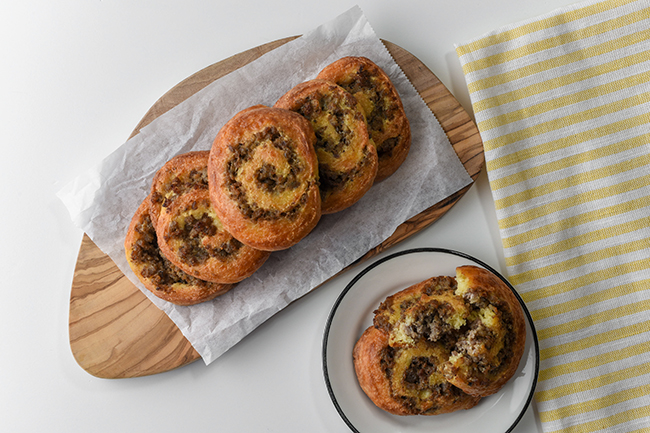
These tasty little pinwheels are made with almond flour and filled with cream cheese and breakfast sausage. They are the perfect grab-and-go meal.
2. Low-Carb Cheddar Biscuits
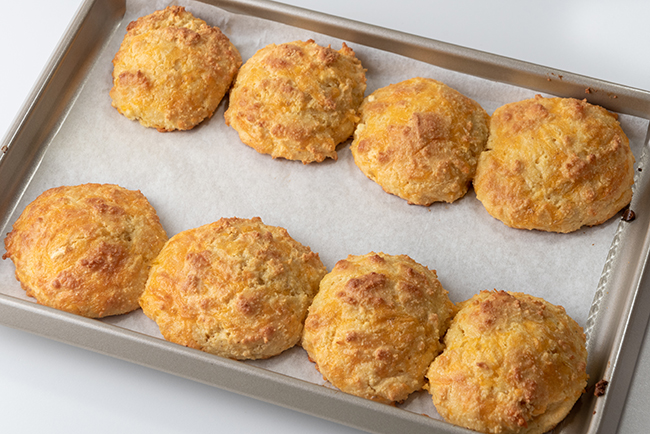
Flaky and savory and just so good, these low-carb cheddar biscuits are the perfect Cheddar Bay Biscuits copycat. They are made with almond flour and lots of cheese and sour cream.
3. Air Fryer Chicken Tenders
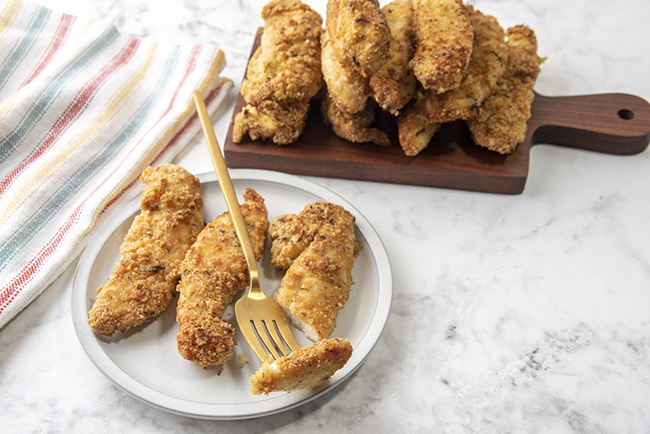
The combination of pork rind crumbs and almond flour gives these juicy chicken tenders the crunchy coating everyone loves! Plus, the air fryer makes them extra crispy without having to use any grease or oil.
4. Sweet and Savory Breakfast Casserole
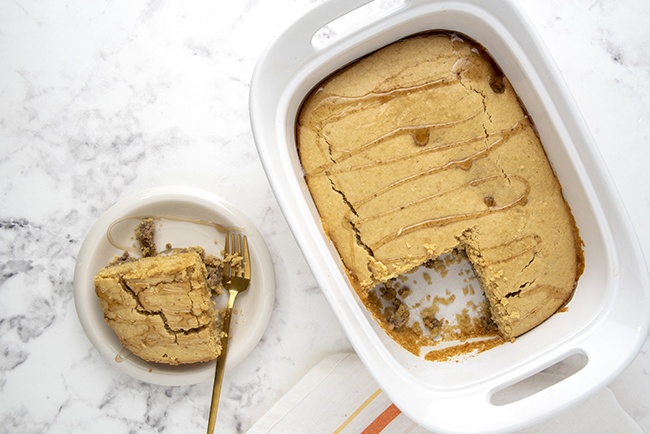
Everyone who enjoys the combination of sweet and savory flavors will really enjoy this low-carb breakfast casserole. The base is made with almond flour, but it’s sweetened with sugar-free maple syrup and Swerve brown sugar substitute.
5. Pumpkin Cream Cheese Muffins
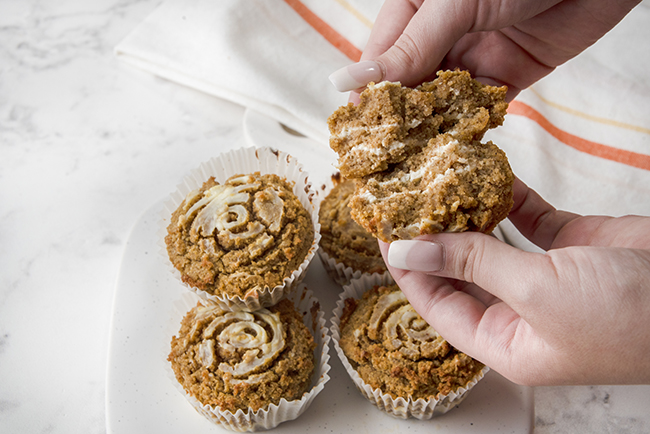
How about a recipe with coconut flour? Here you go! Flaky and filled with swirls of rich cream cheese, pumpkin cream cheese muffins are a wonderful snack or side dish. The entire batch is ready in less than 45 minutes!
Have fun experimenting with all the possibilities low-carb flour has to offer! And don’t forget to share your favorite low-carb recipes with us in the Thinlicious Facebook Community! We can’t wait to hear what catches your eye!
FAQs
What is keto flour used for?
What is the healthiest keto flour?
Is almond flour better than coconut flour?
What is the lowest-carb flour you can buy?
Is oat flour keto friendly?
What can I use instead of almond flour for keto?
Can I use regular wheat flour on a keto diet?
Final Thoughts
Keto baking can be easy and delicious with the right low-carb flours. Once you have the right flour in hand, you can enjoy so many delicious keto treats—guilt free!
Reset Your Metabolism
See how easy it is to lose weight while also having fun with the food you cook? If you’re ready to take control of your health, we suggest starting with the 28 Day Metabolism Reset!
This easy 4-week program will retrain your body to burn fat for energy instead of carbs and sugar. With meal plans and helpful videos, it’s the one place to start when you’re ready to feel energetic and healthy without depriving yourself of the food you love. Get started today!
PIN FOR LATER

What if you could actually take control of
your health in just 10 days?
It’s not your fault you can’t lose weight as a woman over 40 even though you’ve likely tried literally everything. Your metabolism probably feels broken and your hormones are likely all out of whack.
But you can fix it all with ONE simple change: eliminate sugar. We make it super easy with daily lessons teaching you the science behind what makes us gain weight in our midlife and beyond! Are you ready to get started now?

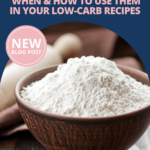
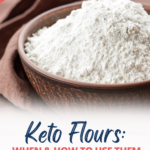
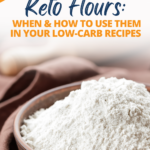
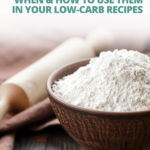
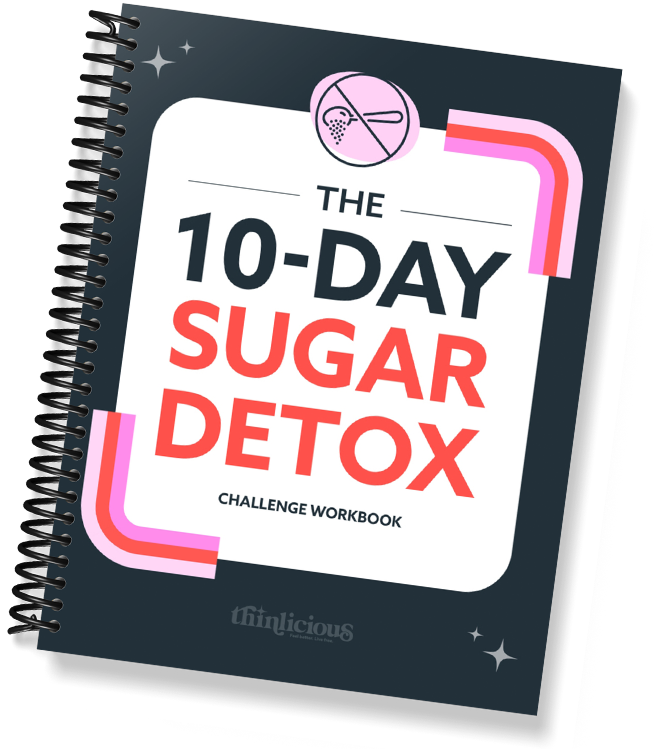
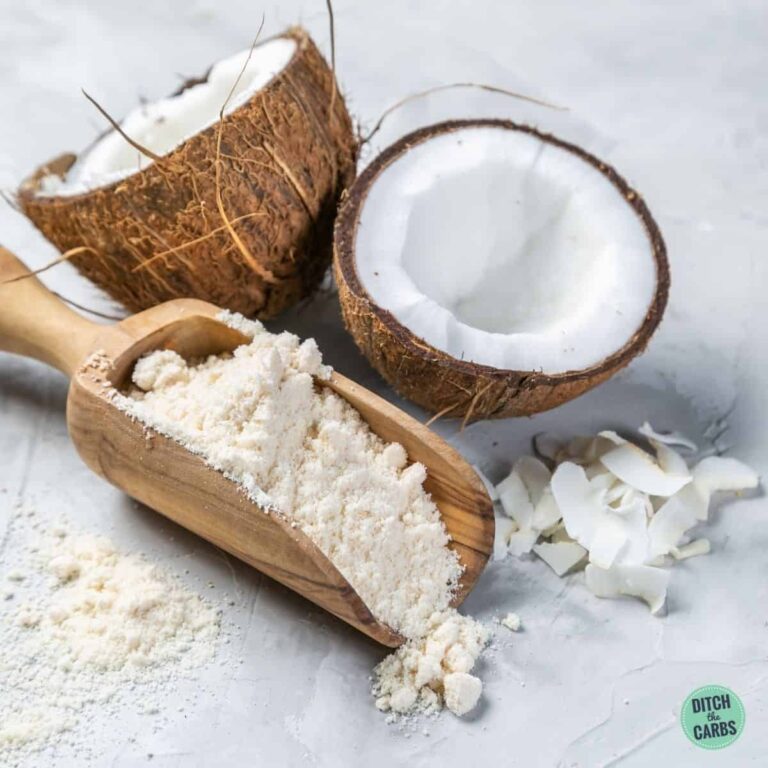
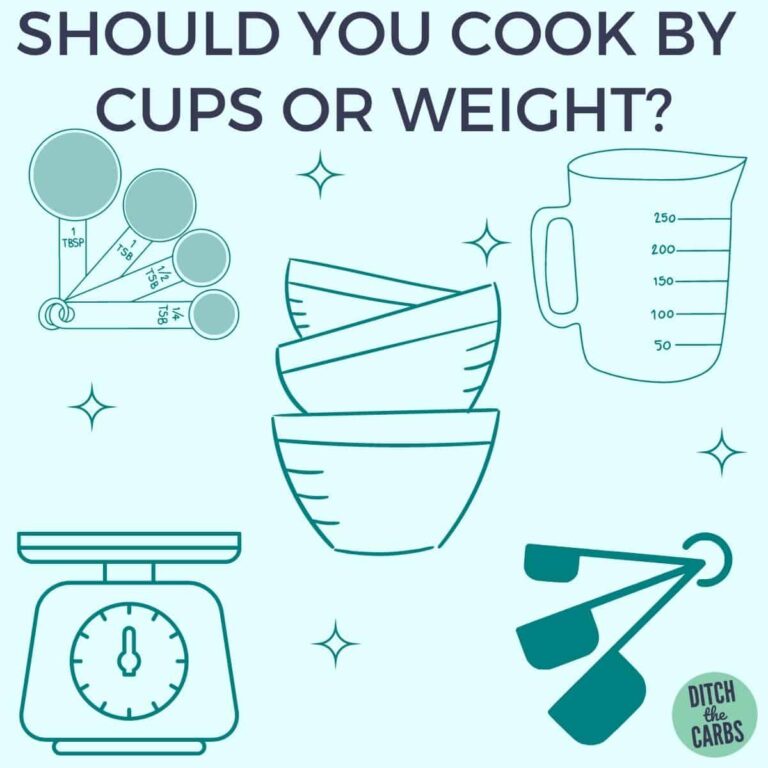
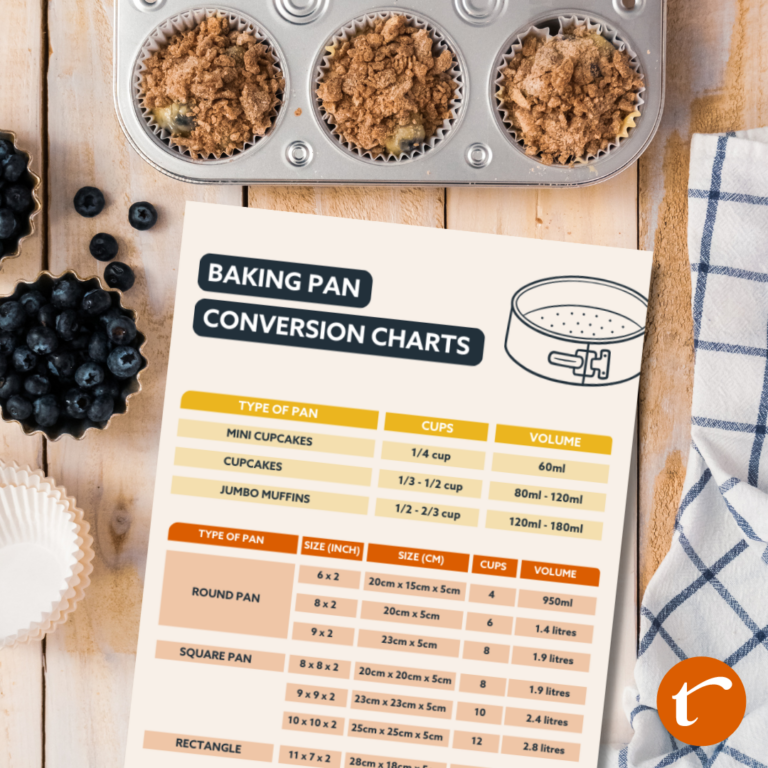
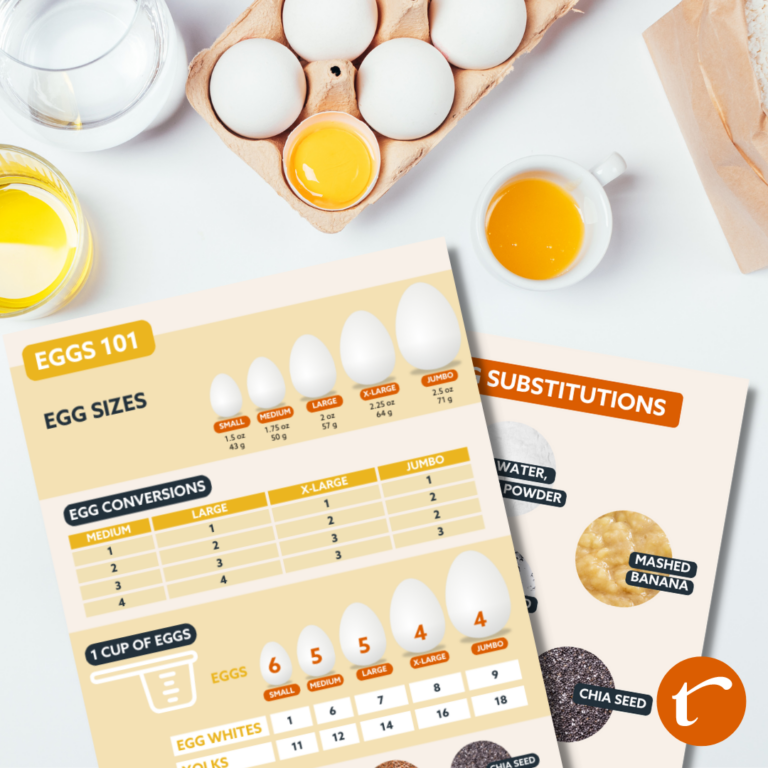
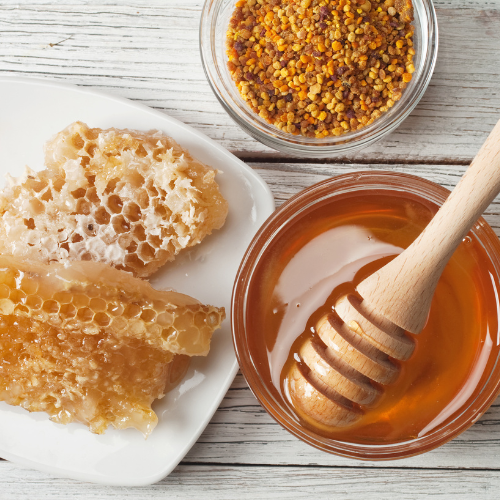
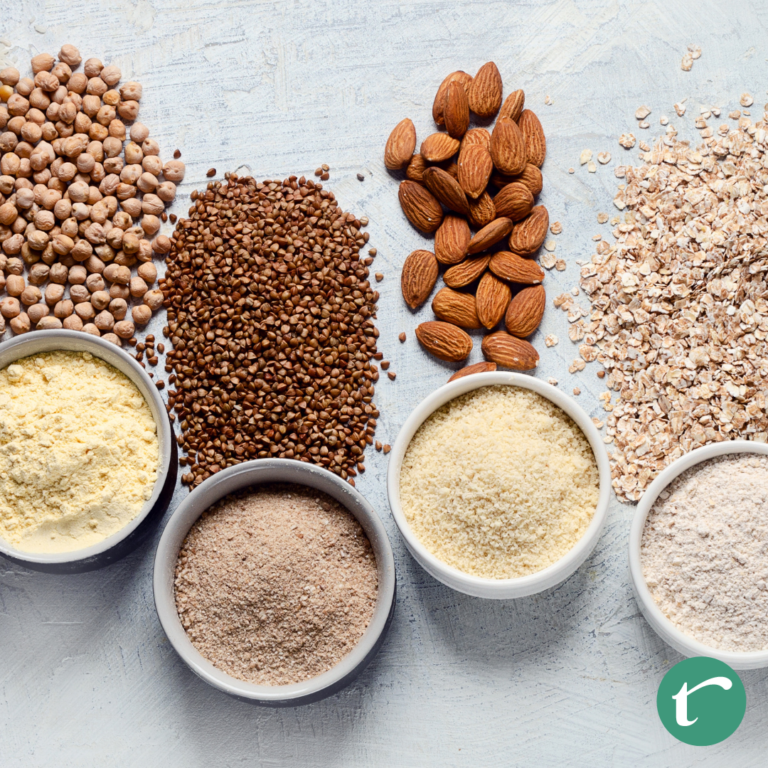
One Comment